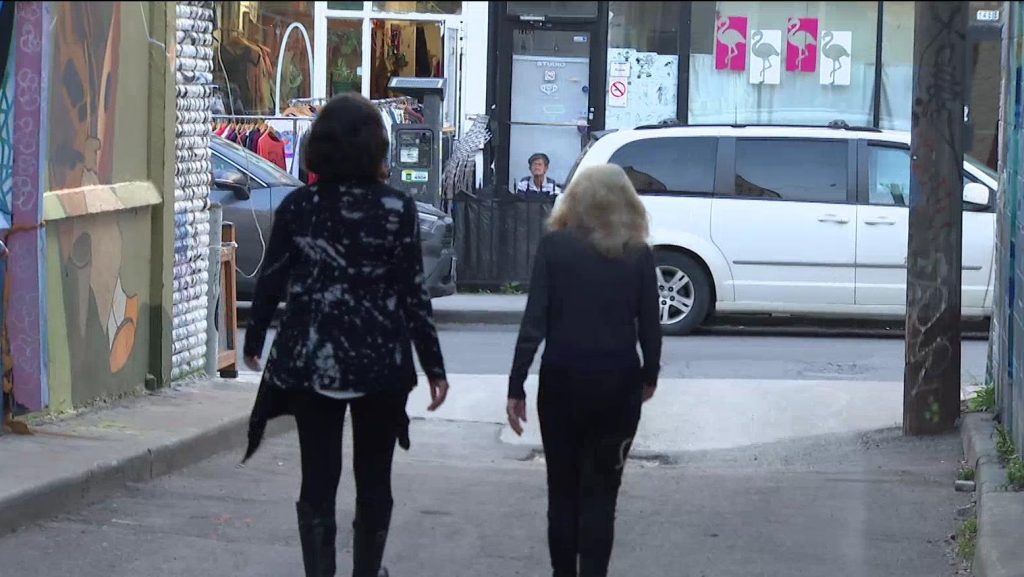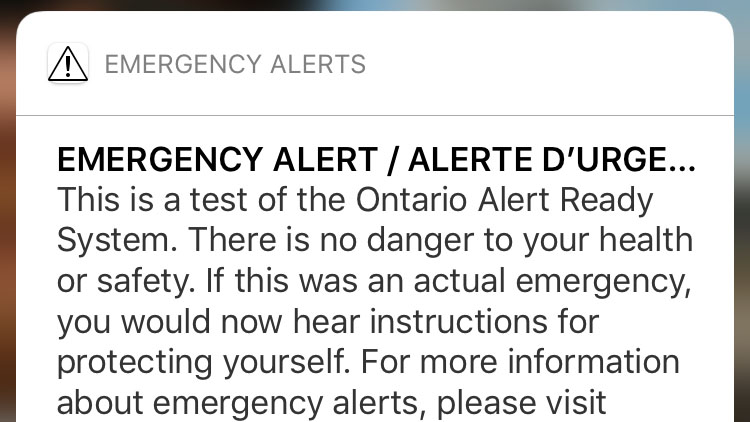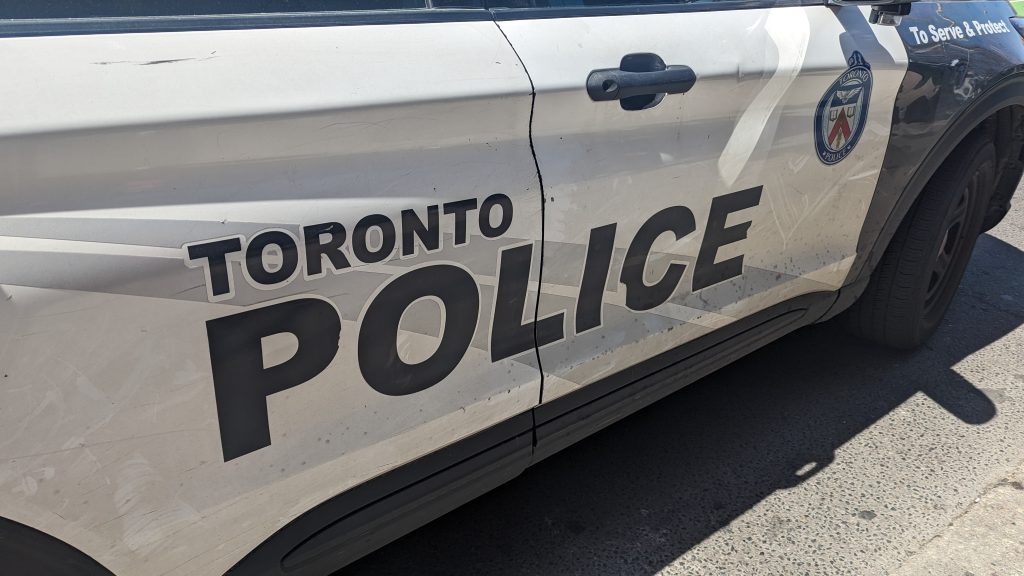Ontario Line tunnelling and station work to begin in 2024, new bridge opening at Exhibition
Posted December 26, 2023 12:00 pm.
Last Updated December 26, 2023 8:35 pm.
The Ontario Line has been the provincial government’s signature new rapid transit project for the past four years, but Metrolinx officials say 2024 will see construction work ramp up across the 15.6-kilometre route.
For anyone who has been along the Gardiner Expressway near Exhibition Place in downtown Toronto, it will have been hard to miss the massive steel structure on the north side that has arisen in recent months. It’s a bridge that will add much-needed capacity for pedestrians in the Exhibition GO station area.
“We’re seeing more and more big events happening at Exhibition Place, both concerts and soccer matches, and all that just leads to a level of congestion that had to be dealt with the existing underground tunnel was getting close to capacity,” Metrolinx executive Malcolm MacKay told CityNews during a tour of the Exhibition station construction site.
The temporary bridge is expected to be in use until the new station is built. MacKay said it’s also needed as construction crews have been shifting GO Transit station platforms, extending existing pedestrian tunnels, excavating space for new track beds and preparing to demolish an old industrial building to make way for a huge new station structure — all while keeping existing transit operating.
MacKay is the Ontario Line’s sponsor within Metrolinx, the provincial transportation agency overseeing the consortiums building the 15-stop line that starts at Exhibition Station, winds through downtown, cuts east and north after it passes the Don River and ends at Don Mills Road and Eglinton Avenue East. He said the bridge will fill a vital need. Projections show up to 388,000 people will use the $11-billion Ontario Line each day when it’s set to open in 2031.
Throughout 2023, work on the line involved site preparations at Exhibition station and beyond, carrying out archeological projects at the Moss Park and Corktown station sites where various historical artifacts have been found and expanding the existing rail corridor at and east of the Don River to make way for additional tracks which also involves rebuilding and expanding several bridges between Eastern Avenue and Gerrard Street East.
There were also challenges throughout the year, including a high-profile legal battle involving the removal of trees at Osgoode Hall and the shutdown of part of Queen Street near Yonge Street for an estimated 4.5 years. Both of those actions, officials said, were needed to facilitate station construction works.
“All transit projects are challenging without a doubt, but this one in particular with its alignment going through the downtown core of Toronto is exceptionally difficult,” MacKay said.
“We have a large number of heritage sites along the alignment. We have had a large number of archaeology digs across the alignment. (It’s) all exciting work in order to enable the building of one of the most complex projects in North America.
Despite the issues, MacKay said there will be several projects beginning in 2024. He said crews will be mobilized for tunnelling to the King-Bathurst and Queen-Spadina station sites as well as near Pape station, starting to build stations at the Queen, Moss Park and Corktown sites, beginning the building of a new tied arch span bridge across the Don River (similar to the one across the Humber River near the Gardiner Expressway), and starting work on the elevated guideways and stations at the northern part of the line.
“Everything’s kicking off really in 2024, and we would be expecting to see construction through 2027, 2028 with the very heavy, civil-type structures and then we have a rolling stock systems operation and maintenance contract that’s mobilizing to install the rail tracks as well as providing the operation and maintenance facility up at Thorncliffe Park [and] installing all the systems that are necessary for a safe operation of a driverless subway system,” he said.
“We do have the four major contracts, but we have a large number of advanced and early contracts that go in and remove all of the interferences that might otherwise cause problems with the delivery of the very large projects … and what we’ve done is we’ve broken up our projects really by geography.”
David Cooper, a transportation planner and a principal with Leading Mobility, called the Ontario Line “a huge centrepiece” for the future GTA rapid transit network.
“I was at a point of time in my career where I didn’t think it was ever going to get built because of the scale and the expanse of the project, but to see that we’re actually moving on that I think will forever transform Toronto for the better,” he said.
“At the end of the day, there’s a balancing act that you need to have between putting in the investment of the transit infrastructure and then also what you’re going to get from the overall transportation network when the investment turns on.
“Putting transit into an area is the most catalytic thing you can do when it comes to developments, housing opportunities, job opportunities, and to have that there is a bit of a trade-off. You will have some impacts.”
Shelagh Pizey-Allen, a spokesperson with the advocacy group TTCriders, said she welcomes the Ontario Line, but she has concerns about how lower-income communities could be negatively affected through increased rents and displacement based on new development. She also said she’s worried about private companies building the line and cost overages.
“Toronto has wanted some form of a relief line along this route for absolutely decades, so it’s important that rapid transit is moving ahead and connecting Thorncliffe Park and Flemingdon Park and creating more transfer options,” she said.
“With the example of what we’ve seen with the Eglinton Crosstown, the public has been responsible for hundreds of millions of dollars in payouts to this private consortium. There’s been a total lack of accountability and transparency with all of the delays. We’re worried about what will come with the Ontario Line.”
Meanwhile, MacKay said they’re cognizant of the community concerns and are working to minimize disruptions.
“We’ve gone to great efforts early on to minimize the impact communities and businesses in the building of the Ontario Line,” he said.
“As we’re building the Ontario line, we’re going to do our very best to maintain business as usual through the downtown core and up through the communities all the way up to Don Mills and Eglinton.”
This is the second story in a five-part series called ‘Transit 2024,’ which looks at several of the Ontario government’s major GTA transit expansion projects. CityNews will have updates on the Finch West LRT, the Hazel McCallion LRT and the GO Transit expansion program throughout the rest of the week.










